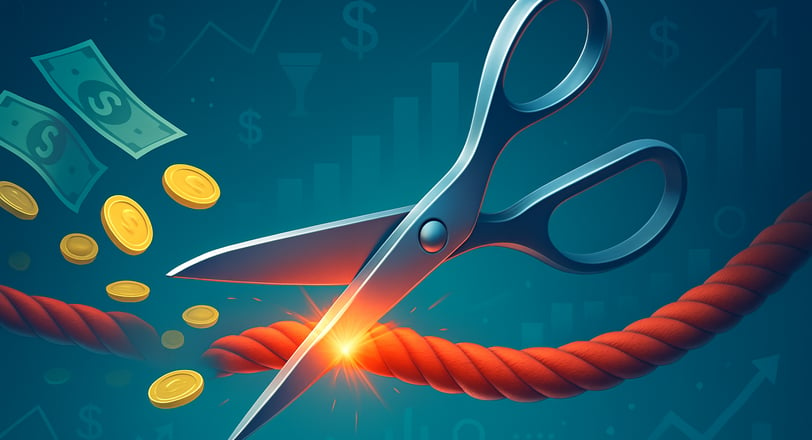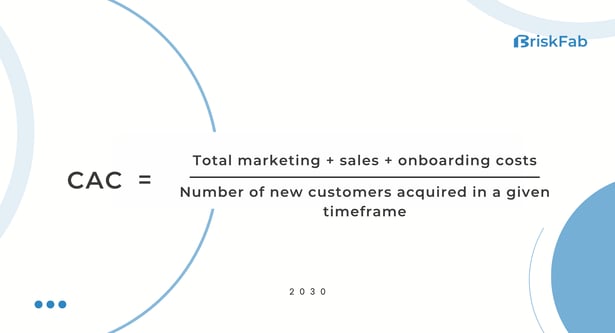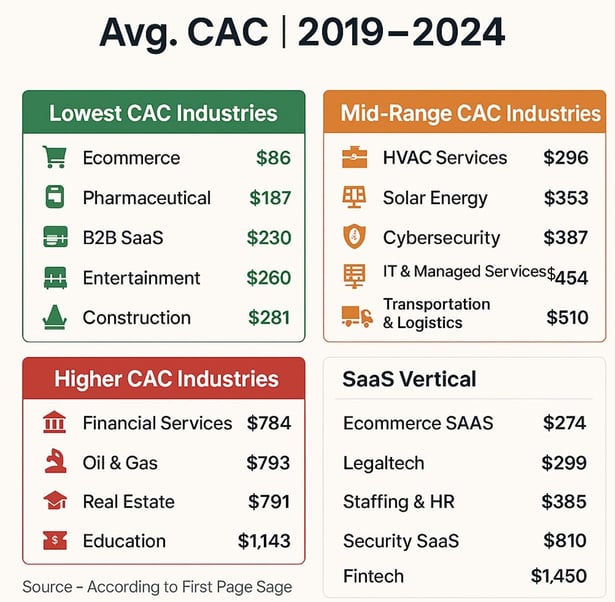How to Slash Your Customer Acquisition Costs in Half
GROWTH
5/29/20255 min read


Your customer acquisition costs are eating your budget alive. You're not alone.
Most B2B companies spend way too much money bringing in new customers. They throw cash at Google Ads, hire more salespeople, and hope something sticks. Meanwhile, their CAC keeps climbing, and profits keep shrinking.
Here's the truth: You can cut your customer acquisition costs in half without cutting corners. You just need to stop doing the wrong things and start doing more of what actually works.
What Customer Acquisition Cost Really Means
Customer acquisition cost is simple math. Take everything you spend on sales and marketing. Divide by the number of new customers you got. That's your CAC.
But here's where most companies mess up. They only count the obvious costs.
What should you include:
Growth team salaries and commissions
Marketing software subscriptions
Ad spend across all channels
Content creation costs
Trade show expenses
Agency fees
What you probably forgot:
Time spent by executives on sales calls
Office space for your sales team
Training and onboarding costs
Tools and technology overhead
Get the full picture first. You can't fix what you don't measure properly.


The Real Problem with High CAC
High customer acquisition costs don't just hurt your budget. They kill your business model.
If you spend $10,000 to acquire a customer who pays you $8,000 over their lifetime, you're burning money. Every new customer makes you poorer.
The magic number for most B2B companies is a 3:1 ratio. Your customer lifetime value should be at least three times your acquisition cost.
7 Proven Strategies to Cut Your CAC in Half
Strategy 1: Define Your Target Customers
Your biggest CAC killer is trying to sell to everyone.
When you cast a wide net, you catch a lot of fish you don't want. You waste time on prospects who will never buy. You dilute your message trying to appeal to different audiences.
Start with this exercise:
List your best 10 customers
Find the patterns (industry, company size, tech stack)
Build a profile of your ideal customer
Only target companies that match this profile
Use intent data tools like Bombora or G2 Buyer Intent to find companies actively researching your category. These prospects convert faster and cost less to acquire.
At Briskfab, we helped one client cut their CAC by 40% just by narrowing their target from "all SaaS companies" to "Series A SaaS companies with 50-200 employees in HR tech."
Strategy 2: Master the Art of Retargeting
Most of your website visitors leave without buying. That's normal. But it's expensive if you just let them walk away.
Set up retargeting campaigns for people who:
Visited your pricing page
Downloaded a whitepaper
Started but didn't finish a demo signup
Spent more than 3 minutes on your site
Show them ads that address their specific concerns. Use tools like Google Analytics to track these behaviors.
Pro tip: Segment your retargeting audiences. Someone who visited your case studies needs different messaging than someone who just hit your homepage.
Retargeted prospects convert 70% better than cold traffic and cost 80% less to convert.
Strategy 3: A/B Test and Optimize Your Pages
Small improvements in conversion rates create massive CAC reductions.
If you convert 2% of landing page traffic and bump that to 3%, you just cut your CAC by 33%. Same traffic, same ad spend, 50% more customers.
Test these elements first:
Headlines (make them customer-benefit focused)
Call-to-action buttons (different colors and text)
Form length (fewer fields = higher conversion)
Social proof (testimonials, logos, case studies)
Page load speed (every second counts)
Use tools like Unbounce for proper A/B testing.
Real example: A SaaS company increased conversions by 127% by changing their headline from "The Best Project Management Software" to "Cut Project Delays in Half with Smart Task Automation."
Strategy 4: Automate the Routine Stuff
AI and automation handle expensive manual work.
Use chatbots to:
Qualify inbound leads 24/7
Answer common questions instantly
Book meetings with qualified prospects
Route leads to the right salespeople
Popular tools: Intercom, HubSpot
These tools can cut your sales team's admin time in half, freeing them up for actual selling activities.
Strategy 5: Improve Your Sales Funnel
Your sales funnel probably leaks like a broken bucket.
Map out every stage:
Lead comes in
Sales Development Rep qualifies them
Account Executive does a demo
Prospect gets a proposal
Deal closes (or doesn't)
Track conversion rates between each stage using your CRM system. Where do you lose the most prospects?
Common fixes:
Poor lead qualification: Use tools like HubSpot lead scoring
Generic demos: Customize every demo to the prospect's use case
Slow follow-up: Respond within 5 minutes, not 5 hours
Unclear next steps: Always end calls with specific next actions
Strategy 6: Let Your Product Do the Selling (Product-Led Growth)
PLG isn't for everyone. If you're selling a complex solution with long onboarding, use PLG elements (e.g., interactive demos or sandboxes) to simulate early value.
Why this slashes CAC:
Prospects see value before you ask for money
Shorter sales cycles mean lower sales costs
Product usage data helps qualify leads automatically
Happy trial users become your best salespeople
Getting started:
Create a self-service demo environment
Build onboarding that shows value in the first session
Use in-product messaging tools like Intercom
Track which features predict conversion
Companies like Slack and Zoom built billion-dollar businesses with this approach.
Strategy 7: Turn Customers into Growth Engines
Your existing customers are your cheapest source of new customers.
Three ways to leverage current customers:
Referral programs: Offer incentives for successful referrals
Expansion revenue: Sell more to existing accounts
Case studies: Use their stories to convert prospects
Why this matters:
Referred customers have 90% higher lifetime value
Upselling costs 5x less than acquiring new customers
Customer stories are your most powerful sales tool
Set up formal referral tracking with tools likeReferralCandy orExtole.
Industry CAC Benchmarks: Where Do You Stand?
Data source: First Page Sage analysis of 29 B2B industries (Jan 2019 - Oct 2024)
Now that you know the strategies, here's how your CAC compares to industry standards:


For a complete industry breakdown and methodology, visit First Page Sage's CAC Report.
Your CAC Reduction Action Plan
Week 1:
Calculate your true CAC (include ALL costs)
Compare against industry benchmarks above
Identify your ideal customer profile
Set up retargeting campaigns for high-intent visitors
Week 2-4:
Run conversion rate tests on your top landing pages
Audit your sales funnel for the biggest leaks
Implement one automation tool
Month 4-6:
Launch referral program
Create a product trial or demo experience
Analyze results and double down on what works
Ready to Slash Your CAC?
The companies that master CAC optimization build sustainable, profitable growth machines. Start with your biggest opportunity from the strategies above, measure against industry benchmarks, and systematically work through the list.
Need help implementing these strategies? At Briskfab, we specialize in helping B2B companies optimize their customer acquisition costs and build scalable growth systems. Get in touch to see how we can help slash your CAC in half.
Your future self (and investors) will thank you for getting this right now instead of later.
